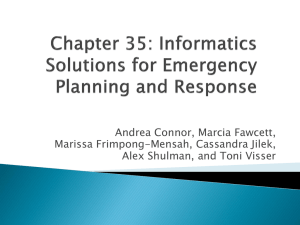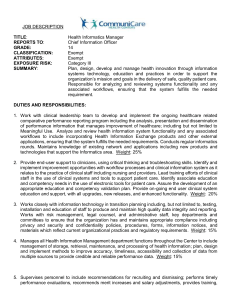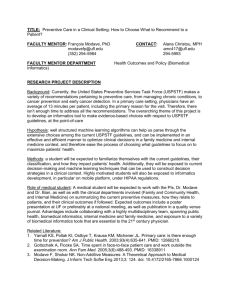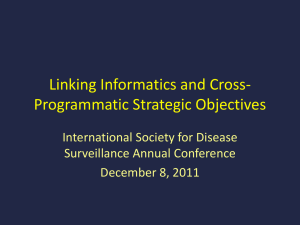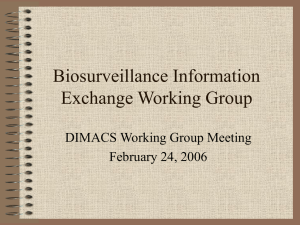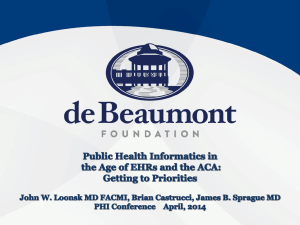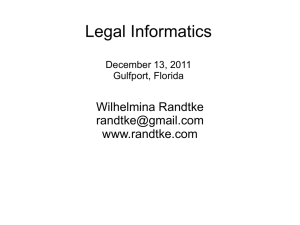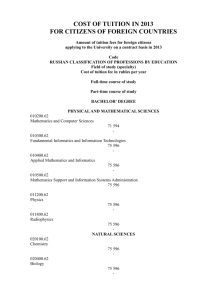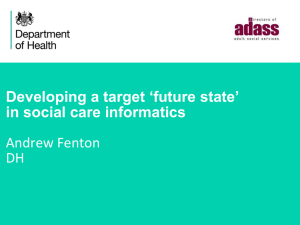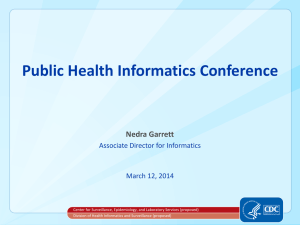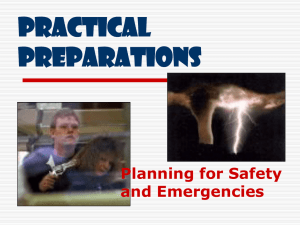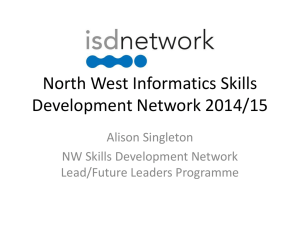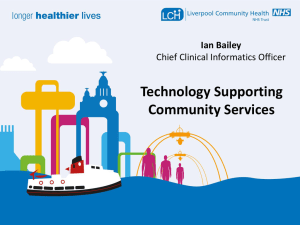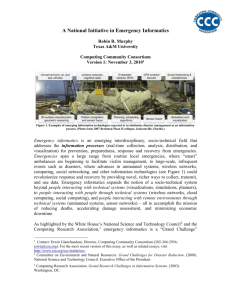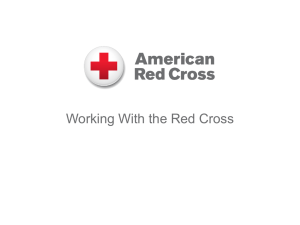Marie-Henry-Award-publication-recipient-presentation-CAPT-Lynn-A.
advertisement
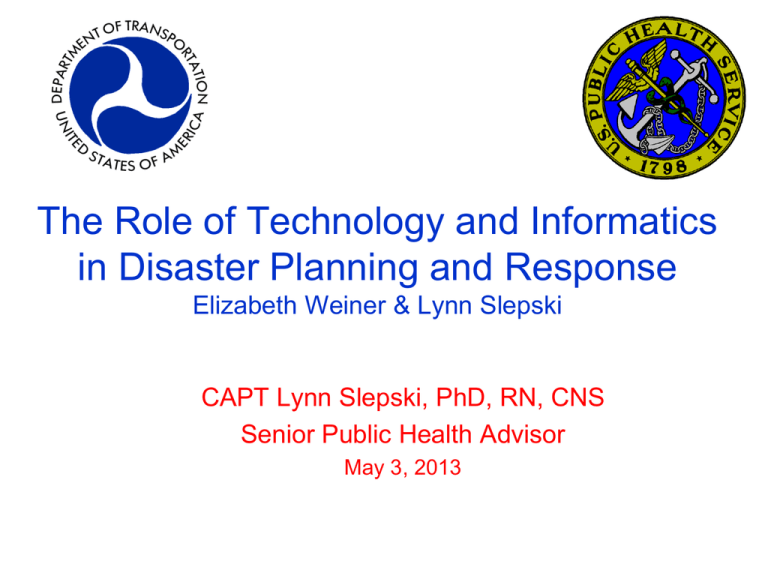
The Role of Technology and Informatics in Disaster Planning and Response Elizabeth Weiner & Lynn Slepski CAPT Lynn Slepski, PhD, RN, CNS Senior Public Health Advisor May 3, 2013 Objectives By the end of this session, advance practice nurses will be able to: Describe at least two contributions that informatics can provide to emergency planning and response. List at least two ways that informatics tools can be designed and used to support decision making and knowledge base building in emergency planning and response efforts. Begin a dialogue about publishing Informatics Makes use of standard terminology (e.g. disaster and emergencies; terrorism vs. bioterrorism) Access databases such as (NLM) Disaster Information Management Research Center-Links Category of disasters Currently posted information Planning tools access to public health data about air, water, sanitation, utilities and health care facilities Public Health Emergencies SARS detect, diagnose and track cases H5N2 and H1N1-case counts underestimated Teacher absences/ school closure— community level disease OTC purchases National Retail Data Monitoring System Fukushima Daiichi-forecast and inform the trajectory, duration and impact Pertussis in Washington State—first noted by Twitter and Facebook inquiries Biosurveillance Systems Global Public Health Intelligence Network and Project Argus—use open source reporting to identify “tipping points” CDC’s BioSense—health departments, hospital emergency rooms and pharmacies Boston Children’s Health Map-scans on-line reports and categorizes “Outbreak Near Me” Disaster Mobile Health Technology Alerts and updates Tracking patient flow Patient care and facility management data mHealth platforms standardize data acquisition, organize info storage and facilitate medical communication Hopkins Advanced Health and Disaster Aid Network Haiti—iPhone app iChart—patient logs and longitudinal record Discussion Informatics and technology offer ways to improve: Patient tracking and information flow Decision support and resource tracking Biosurveillance provides early recognition and warning Implications for further research More data and information may be overwhelming National-level IRB Challenges Uncoordinated efforts for competency development Difficulty with field research Lack of policy development Lack of funding for research in emergency planning and response Research Questions What are the critical information requirements that transect most health emergencies? Can disease-related behaviors (i.e. care seeking and absenteeism) serve as proxies for case finding? What are the science and technology capabilities that will facilitate biosurveillance activities including new detection and HIE approaches Are there innovative ways to combine information and known facts to predict? Conclusion There remains several unmet informational needs in disaster planning and response Protecting health and safety of people, animals and the environment is a top security priority We need to leverage existing technologies and systems, enable efficiencies and where able create opportunities to help each other Nurses specializing in informatics have new career possibilities outside of the hospital Final Thought You can help make a difference: Nurses Readiness Needs Assessment Available : https://www.surveymonkey.com/s/USPHS_NPAC_ ReadinessNeedsAssessmentSurvey Closes Monday, May 6, 2013 POCs: LCDR Saligan or CDR Nicole Chamberlain Publishing Something you know well or would like to learn about Identify: Target audience Platform (media) that you want to use & requirements Consider Impact Factor Consider working with a partner Outline first, then flesh in Consider using a style tool Put away for a night a re-read Have someone else read your draft Publishing Near final draft—read it out loud Get a 2nd opinion (grow a tough skin) Put into final and send Edits Really depends on reviewers Accept their recommendations or rebut I use a table Celebrate or try again

